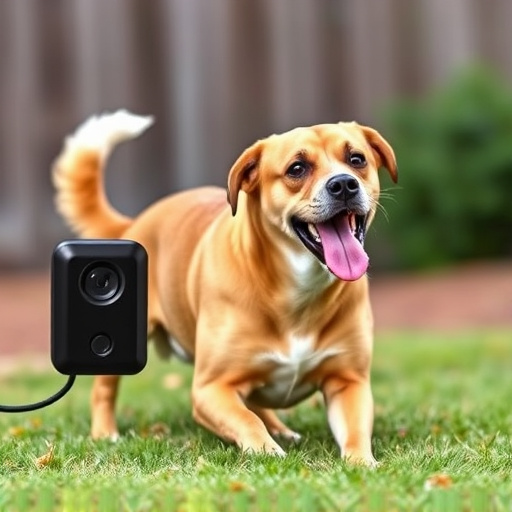Electronic pet deterrents for dog behavior management utilize safe but irritating high-frequency sound waves, with effectiveness and safety contingent upon adhering to varying regional Electronic Pet Deterrent Safety Regulations. These regulations govern device design, power output, and frequency ranges, prioritizing human and animal well-being. Responsible use involves community dialogue, exploring alternatives, thorough research, and post-implementation monitoring to balance neighborhood needs with ethical considerations regarding animal welfare and human ethics.
Neighborhood dog control has seen a surge in the adoption of electronic pet deterrents, driven by concerns over safety and community harmony. This comprehensive overview delves into the understanding, regulation, and ethical considerations surrounding these devices. We explore the effectiveness of electronic pet deterrents while scrutinizing critical safety regulations that govern their use. By balancing community needs, we aim to provide insights into best practices for responsible and humane dog control.
- Understanding Electronic Pet Deterrents: A Comprehensive Overview
- Safety Regulations and Their Impact on Neighborhood Dog Control Equipment
- Balancing Community Needs: Ethical Considerations and Best Practices
Understanding Electronic Pet Deterrents: A Comprehensive Overview
Electronic pet deterrents, also known as sonic equipment for dog control, have gained popularity as a humane and non-lethal approach to managing canine behavior. These devices emit high-frequency sound waves or ultrasonic tones that are inaudible to humans but can be irritating to dogs, prompting them to avoid certain areas. Understanding the technology behind these deterrents is crucial, especially when considering their safety and effectiveness.
The safety regulations surrounding electronic pet deterrents vary across regions, with many countries and states implementing strict guidelines to ensure consumer protection. These regulations often mandate specific frequency ranges, power levels, and testing standards to guarantee that the devices are safe for animals and humans alike. It’s important for pet owners and professionals alike to adhere to these guidelines to prevent any potential harm and ensure the humane application of such technology.
Safety Regulations and Their Impact on Neighborhood Dog Control Equipment
The safety of both animals and humans is paramount when considering neighborhood dog control equipment, leading to the implementation of strict Electronic Pet Deterrent Safety Regulations. These regulations ensure that devices designed to manage canine behavior do not pose risks to pets or people. Manufacturers must adhere to guidelines regarding power output, frequency range, and overall design to prevent physical harm. Proper safety standards protect against adverse effects like hearing damage, burns, or any form of injury from the equipment’s operation.
Adhering to these Electronic Pet Deterrent Safety Regulations is crucial for maintaining a harmonious relationship between pet owners and their neighbors. It fosters an environment where dog control measures are effective without compromising animal welfare or human safety. Regular testing and maintenance of such devices further ensure they remain within safe operating parameters, contributing to peaceful and secure communities.
Balancing Community Needs: Ethical Considerations and Best Practices
In any discussion about neighborhood dog control, balancing community needs with ethical considerations is paramount. The use of electronic pet deterrents, while offering potential solutions to noise pollution and public safety concerns, raises critical questions regarding animal welfare and human ethics. These devices, which often rely on ultrasonic sound or shock technology, must be implemented with care to avoid causing undue stress or harm to dogs. Adherence to safety regulations, such as those governing Electronic Pet Deterrent Safety, is essential to ensure these tools are employed responsibly.
Best practices involve engaging in open dialogue with the community, considering alternative methods like training programs and noise abatement strategies, and conducting thorough research on the effectiveness and potential side effects of sonic equipment. Regular monitoring and evaluation post-implementation are crucial to gauge the success of such measures while mitigating any adverse impacts on both dogs and residents’ quality of life.
The implementation of electronic pet deterrents in neighborhood dog control requires a delicate balance between safety, ethical considerations, and community needs. As technology advances, understanding the effectiveness and potential risks of these devices is crucial. Adhering to safety regulations ensures that solutions like sonic equipment are used responsibly, minimizing harm while effectively addressing dog-related concerns. By fostering open dialogue and considering best practices, communities can create a harmonious environment for both residents and pets.
